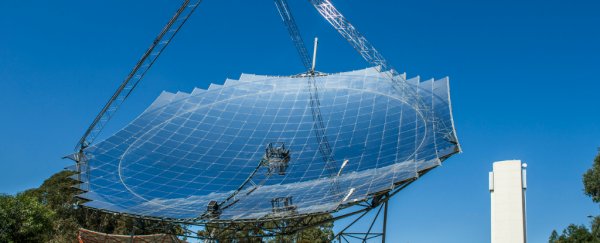Scientists at the Australian National University have set a world record for efficiency for a solar thermal dish generating steam for power stations.
The team halved energy losses and achieved a 97 percent conversion of sunlight into steam through a new receiver for a solar concentrator dish. This beats commercial systems by about seven percentage points.
"When our computer model told us the efficiency that our design was going to achieve, we thought it was alarmingly high," says John Pye, from the ANU Research School of Engineering.
"But when we built it and tested it, sure enough, the performance was amazing."
The ANU team has already had commercial interest in the solar thermal system.
"We're actually talking seriously with a company that's seeking to use our new receiver in some large mine-site applications, for provision of both heat and power to the site," Pye told Business Insider.
Here's the solar dish in action:
The design was presented at the SolarPACES conference.
Solar thermal systems use reflectors to concentrate sunlight and generate steam which can drive conventional power station turbines.
It can be combined with heat storage systems and can supply power on demand at a significantly lower cost than solar energy from photovoltaic panels which has to be stored in batteries.
"This new design could result in a 10 percent reduction in the cost of solar thermal electricity," says Pye.
The aim is to get costs down to 12 cents a kilowatt-hour of electricity.
The ANU solar concentrator is the largest of its kind in the world at 500 square metres. It focuses the power of 2,100 Suns onto the receiver, through which water is pumped and heated to 500 degrees Celsius.
The new receiver design is a cavity that resembles a top hat with narrow opening and a wide brim. Water pipes spiral around the underside of the brim and up into the hat.
This article was originally published by Business Insider.
More from Business Insider:
